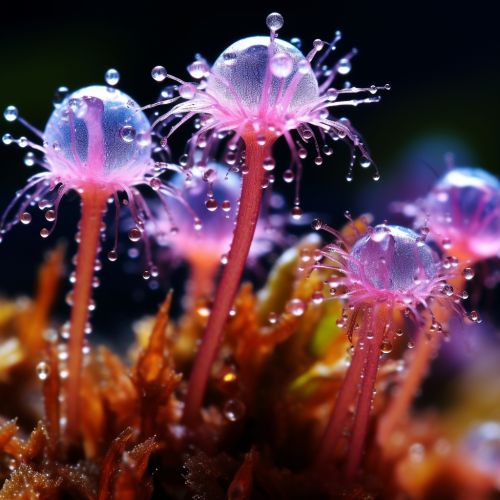The Biological Mechanisms of Plant Defense Mechanisms
Introduction
Plants, unlike animals, cannot physically move to escape from harmful conditions or predators. Instead, they have developed a wide range of defense mechanisms that allow them to withstand, deter, or mitigate damage from herbivores and pathogens. These defense mechanisms are primarily biological in nature and are a result of millions of years of evolution and natural selection.
Physical Defense Mechanisms


One of the most common physical defense mechanisms in plants is the development of physical barriers or deterrents such as thorns, spines, and prickles. These structures, which are derived from leaves, stems, or hairs, serve to deter herbivores by causing physical injury or discomfort.
Thorns, Spines, and Prickles
Thorns, spines, and prickles are sharp structures that are present on the surface of certain plants. They are designed to inflict physical injury on herbivores, thereby deterring them from feeding on the plant. Thorns are modified branches or stems, spines are modified leaves, and prickles are extensions of the plant's cortex and epidermis.
Trichomes


Another physical defense mechanism is the presence of trichomes, which are hair-like structures present on the surface of the plant. Trichomes can deter herbivores by obstructing their movement, reducing their ability to locate feeding sites, and by causing physical irritation or injury.
Chemical Defense Mechanisms
In addition to physical defenses, plants also employ a variety of chemical defense mechanisms. These include the production of toxic or repellent chemicals, as well as substances that interfere with the digestion or reproductive capacity of herbivores.
Secondary Metabolites
Plants produce a wide range of secondary metabolites, many of which have defensive properties. These include alkaloids, terpenoids, and phenolics, which can have toxic, repellent, or anti-digestive effects on herbivores.
Plant Volatiles


Plants also produce volatile organic compounds in response to herbivore attack. These volatiles can serve to attract predators or parasitoids of the herbivores, thereby providing an indirect form of defense.
Induced Defense Mechanisms
In addition to constitutive defenses, which are always present in the plant, some defense mechanisms are induced in response to herbivore attack. These induced defenses can include both physical and chemical changes to the plant.
Systemic Acquired Resistance
Systemic acquired resistance (SAR) is a "whole-plant" resistance response that occurs following an initial localized infection. Following the infection, the plant is capable of quickly recognizing the pathogen and responding effectively to prevent its spread.
Jasmonic Acid Pathway


The jasmonic acid pathway is a key signaling pathway involved in the regulation of plant defenses. When a plant is attacked by a herbivore, jasmonic acid levels increase, triggering the expression of defense genes and leading to the production of defensive compounds.
Trade-offs and Costs of Plant Defense
While plant defense mechanisms can be highly effective in deterring herbivores and pathogens, they also come with costs. These can include the energy and resources required to produce and maintain the defenses, as well as potential negative effects on plant growth and reproduction.
Conclusion
Plant defense mechanisms represent a fascinating and complex area of study. Understanding these mechanisms not only provides insights into plant evolution and ecology, but also has potential applications in agriculture and horticulture, where plant defenses can be harnessed to protect crops from pests and diseases.
